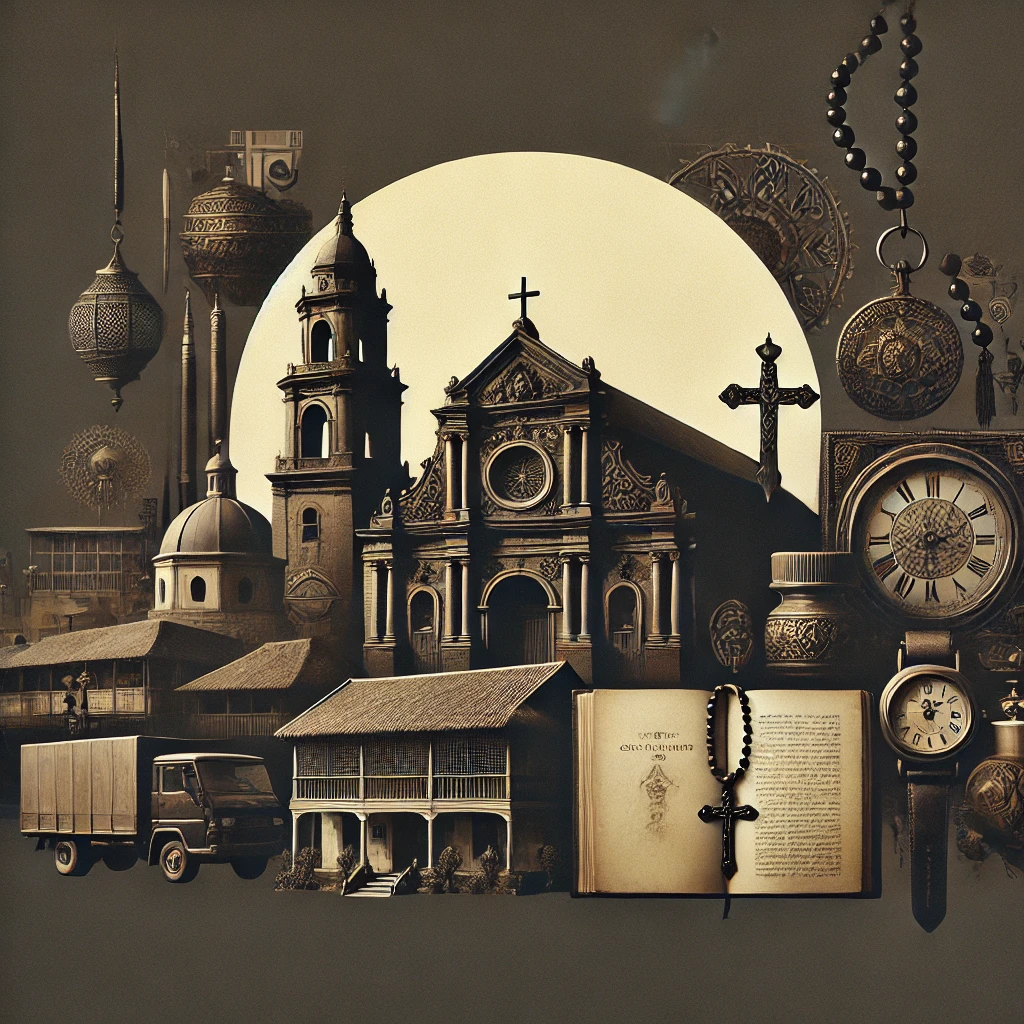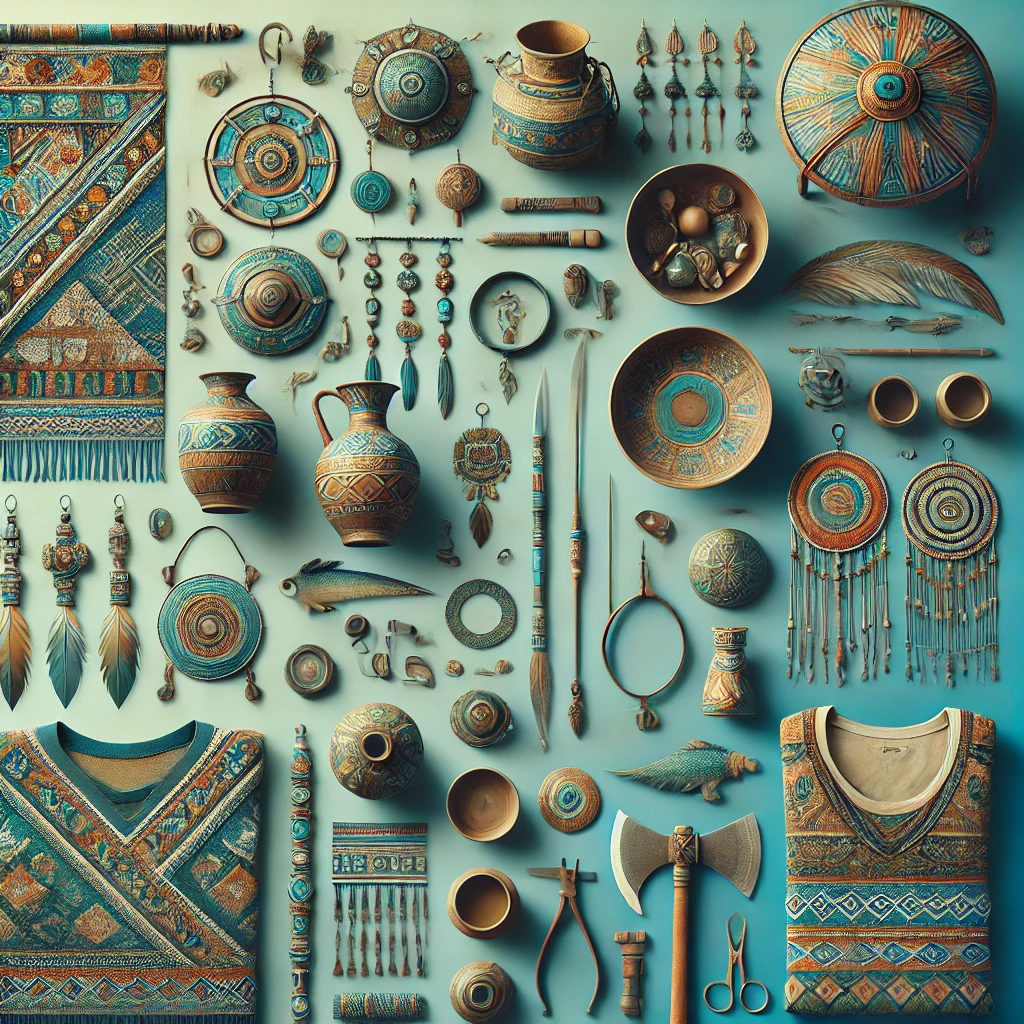Hey there, history buffs and culture enthusiasts! Today, we’re diving into a fascinating chapter of Philippine history that has left an indelible mark on the country’s society, culture, and identity. I’m talking about the Spanish Colonial Period – a time that spanned over three centuries and shaped the Philippines in ways that are still evident today. So, grab a cup of coffee (or perhaps some Filipino tsokolate), and let’s embark on this intriguing journey through time.
The Spanish Colonial Period in the Philippines lasted from 1565 to 1898, a whopping 333 years that saw the archipelago transform from a collection of independent barangays into a unified colony under Spanish rule. But this wasn’t just a period of foreign domination; it was a time of cultural exchange, religious conversion, and societal transformation that would forever alter the course of Filipino history. From language and religion to art and architecture, the influences of this era continue to reverberate through modern Filipino society.
In this blog, we’ll explore the lasting impacts of Spanish colonization on various aspects of Filipino life. We’ll uncover how these influences have become an integral part of Filipino identity and discuss both the positive and negative legacies of this colonial period. So, whether you’re a history enthusiast, a cultural studies student, or simply curious about how the past shapes the present, this deep dive into the Spanish Colonial Period’s lasting influences on Filipino society is sure to pique your interest.
The Linguistic Legacy: Spanish Touches in Filipino Languages
The Birth of a New Language
One of the most obvious and enduring influences of the Spanish Colonial Period is the impact on language. While the Spanish colonizers didn’t succeed in making their language the primary tongue of the Philippines, they certainly left their linguistic mark. Today, Filipino, the national language based on Tagalog, is peppered with Spanish loanwords that have become an inseparable part of everyday communication.
Think about it – when you’re chatting with your Filipino friends, how many Spanish-origin words do you use without even realizing it? From common expressions like “por favor” (please) and “gracias” (thank you) to everyday terms like “mesa” (table), “silla” (chair), and “kutsilyo” (knife), Spanish words have seamlessly integrated into Filipino vocabulary. Even days of the week and months of the year in Filipino are derived from Spanish!
But it’s not just about individual words. The Spanish influence extends to sentence structures and idiomatic expressions as well. For instance, the Filipino way of telling time, using “alas” (at) followed by the hour, is a direct inheritance from Spanish. This linguistic legacy is so deeply ingrained that it’s hard to imagine Filipino languages without their Spanish elements.
Regional Variations and Creole Languages
The Spanish influence on language wasn’t uniform across the Philippines. Different regions experienced varying degrees of Spanish linguistic impact, leading to fascinating variations in local languages. In some areas, particularly in the Visayas, Spanish influence was more pronounced, resulting in languages with a higher percentage of Spanish loanwords.
Perhaps the most intriguing linguistic outcome of the Spanish Colonial Period is the development of creole languages. Chavacano, a Spanish-based creole language spoken in parts of Mindanao and Zamboanga, is a prime example. It’s a unique blend of Spanish and local languages that emerged during the colonial period and continues to be spoken by hundreds of thousands of Filipinos today. Chavacano stands as a living testament to the complex linguistic interactions that occurred during Spanish rule.
Religious Transformation: The Catholic Legacy
Catholicism: A New Faith Takes Root
If there’s one aspect of Filipino society that was profoundly transformed by Spanish colonization, it’s religion. Prior to the arrival of the Spanish, the Philippines was a patchwork of animistic beliefs, with influences from Hinduism and Islam in certain regions. The Spanish brought with them Roman Catholicism, and their mission to spread this faith became a cornerstone of colonial policy.
Today, the Philippines stands as the third-largest Catholic country in the world, with over 80% of the population identifying as Roman Catholic. This widespread adoption of Catholicism has had far-reaching effects on Filipino culture, values, and social norms. From the prominence of the Church in public life to the religious festivals that punctuate the Filipino calendar, Catholicism has become an integral part of Filipino identity.
The influence of Catholicism extends beyond mere religious practices. It has shaped Filipino moral values, family structures, and even political dynamics. The concept of “utang na loob” (debt of gratitude), while rooted in pre-colonial Filipino culture, was reinforced by Catholic teachings and continues to play a significant role in Filipino social relationships.
Syncretism: A Unique Blend of Old and New
One of the most fascinating aspects of the Catholic legacy in the Philippines is the way it blended with pre-existing beliefs and practices. This syncretism resulted in a uniquely Filipino brand of Catholicism that sets it apart from Catholicism in other parts of the world. Folk Catholicism, as it’s often called, incorporates elements of indigenous animistic beliefs and practices into Catholic rituals and celebrations.
Take, for example, the famous Ati-Atihan festival in Aklan, or the Sinulog festival in Cebu. These vibrant celebrations honor the Santo Niño (Child Jesus) but incorporate pre-colonial dance rituals and costumes. Similarly, many Filipinos maintain beliefs in supernatural creatures like aswangs and duwende alongside their Catholic faith. This blending of beliefs reflects the complex cultural negotiations that took place during and after the Spanish Colonial Period.
Social Structures and Class Dynamics
The Emergence of New Social Classes
The Spanish Colonial Period didn’t just change what Filipinos believed; it also reshaped how Filipino society was structured. The colonial administration introduced new social classes and hierarchies that would have lasting impacts on Philippine society.
At the top of the social ladder were the Spanish colonizers and their descendants, followed by the mestizos (those of mixed Spanish and Filipino heritage). Below them were the indios (native Filipinos), and at the bottom were the slaves and landless laborers. While this strict hierarchy has evolved over time, echoes of it can still be seen in modern Philippine society.
One of the most significant developments was the rise of the principalia class – the native Filipino elite who served as intermediaries between the Spanish colonizers and the general population. Many of these families maintained their influence well into the post-colonial period, shaping Philippine politics and economics for generations.
Land Ownership and Economic Disparities
The Spanish colonial administration also introduced new concepts of land ownership that would have long-lasting consequences. The encomienda system, which granted Spanish colonizers the right to collect tribute from natives in exchange for their protection and religious instruction, laid the groundwork for large-scale land ownership and tenancy systems.
This system, along with the later hacienda system, contributed to the concentration of land in the hands of a few wealthy families – a situation that persists to some extent in the Philippines today. The economic disparities that emerged during this period have proven difficult to eradicate, contributing to ongoing issues of inequality in modern Philippine society.
Art and Architecture: A Visual Legacy
The Birth of Filipino Baroque
When you wander through the historic districts of Manila or visit the centuries-old churches scattered across the Philippines, you’re witnessing one of the most visible legacies of the Spanish Colonial Period – its impact on Philippine architecture. The Spanish brought with them European architectural styles, particularly Baroque, which were adapted to local conditions and tastes, resulting in a unique Filipino Baroque style.
The most prominent examples of this architectural legacy are the numerous Catholic churches built during the colonial period. These churches, with their ornate facades, massive stone walls, and elaborate altars, stand as enduring monuments to the Spanish era. Many of these structures, like the San Agustin Church in Manila and the Miagao Church in Iloilo, have been recognized as UNESCO World Heritage Sites.
But it’s not just churches. Spanish colonial architecture also influenced civic buildings, homes, and urban planning. The concept of the plaza complex – with a church, government building, and marketplace arranged around a central square – was introduced by the Spanish and continues to be a feature of many Philippine towns and cities.
A New Artistic Tradition
The influence of Spanish colonization on Filipino art goes beyond architecture. It introduced new artistic techniques, subjects, and mediums that would forever change the course of Philippine visual arts. Religious art, in particular, flourished during this period, with Filipino artists creating stunning religious paintings and sculptures that blended European techniques with local sensibilities.
One of the most famous examples of this artistic fusion is the Santo Niño de Cebu, a statue of the Child Jesus that combines Spanish Catholic iconography with what some scholars believe to be pre-colonial design elements. This statue, and others like it, exemplify how Filipino artists adapted and interpreted European artistic traditions through a local lens.
The Spanish period also saw the introduction of new art forms like the retablo (altarpiece) and the tradicional (religious plays), which became important elements of Filipino religious and cultural expression. These art forms continue to be practiced and appreciated in the Philippines today, serving as living links to the country’s colonial past.
Cuisine: A Flavorful Fusion
New Ingredients, New Flavors
Now, let’s talk about something that’s close to every Filipino’s heart (and stomach) – food! The Spanish Colonial Period brought about significant changes to Filipino cuisine, introducing new ingredients, cooking techniques, and dishes that have become staples of Filipino cooking.
The Spanish introduced a variety of new crops to the Philippines, including tomatoes, potatoes, corn, and chili peppers. These ingredients were quickly incorporated into local cuisine, leading to the creation of new dishes and the evolution of existing ones. For example, the popular Filipino dish kaldereta, a meat stew with tomato sauce, has its roots in the Spanish caldereta.
Spanish culinary influence is also evident in the many Filipino dishes that bear Spanish names, such as adobo, menudo, and mechado. While these dishes have been adapted to local tastes and ingredients, their Spanish origins are clear. The Spanish also introduced new cooking techniques, like braising and stewing, which expanded the repertoire of Filipino cooking methods.
The Sweet Legacy
One area where Spanish influence is particularly noticeable is in Filipino desserts and snacks. The Spanish brought with them a love for sweet treats and the techniques for making them. This led to the creation of many beloved Filipino desserts that are still enjoyed today.
Take, for instance, leche flan, a creamy caramel custard that’s a staple at Filipino celebrations. Or consider the various kakanin (rice cakes) that often feature ingredients introduced by the Spanish, like milk and cheese. Even the humble pan de sal, the ubiquitous Filipino breakfast roll, has its origins in Spanish bread-making traditions.
The Spanish also introduced new preservation techniques, like making jams and preserves, which gave rise to Filipino favorites like pastillas de leche and yema. These sweet treats not only satisfied Filipino sweet tooths but also became important elements of Filipino food culture and traditions.
Education and Literacy: A Double-Edged Sword
The Introduction of Formal Education
The Spanish Colonial Period marked the beginning of formal education in the Philippines. The Spanish established schools and universities, with the primary aim of spreading Catholicism and training native Filipinos for roles in the colonial administration and the Church.
The University of Santo Tomas, founded in 1611, is the oldest existing university in Asia and stands as a testament to this educational legacy. These institutions, while initially limited in scope and accessibility, laid the groundwork for the Philippine education system.
However, it’s important to note that education during this period was far from universal. It was primarily available to the elite and was heavily focused on religious instruction. Nevertheless, it introduced concepts of formal schooling and literacy that would have far-reaching effects on Filipino society.
The Rise of an Educated Class
One of the most significant outcomes of Spanish colonial education was the emergence of an educated Filipino class. These individuals, often referred to as the ilustrados, would play a crucial role in the development of Filipino national identity and the push for independence.
Figures like José Rizal, Marcelo H. del Pilar, and Graciano López Jaena received their education in Spanish colonial schools and universities. They used their knowledge and skills to critique colonial rule and advocate for reforms, eventually laying the intellectual foundations for the Philippine Revolution.
The Spanish colonial education system, despite its limitations, inadvertently created a class of Filipinos who could engage with European ideas and articulate Filipino grievances in terms that the colonial powers could understand. This educated class would continue to play a significant role in Philippine society and politics well into the post-colonial period.
A Complex Legacy
As we wrap up our journey through the lasting influences of the Spanish Colonial Period on Filipino society, it’s clear that this era left an indelible mark on virtually every aspect of Filipino life. From the languages spoken in the streets of Manila to the dishes served at Filipino dinner tables, from the churches that dot the landscape to the social structures that shape Filipino interactions, the legacy of Spanish colonization is omnipresent.
However, it’s important to remember that this legacy is complex and multifaceted. While Spanish colonization brought about significant cultural, religious, and societal changes, it also resulted in the suppression of indigenous cultures and the establishment of unequal power structures that continue to impact Philippine society today.
The lasting influences of the Spanish Colonial Period are neither wholly positive nor entirely negative. They are a part of the rich tapestry of Filipino history and identity, representing both cultural enrichment and historical trauma. Understanding these influences allows us to better appreciate the complexity of Filipino culture and the resilience of the Filipino people in adapting to and transforming foreign influences into something uniquely their own.
As we continue to grapple with the legacies of colonialism in the modern world, the story of the Spanish Colonial Period in the Philippines serves as a powerful reminder of how the past continues to shape the present. It challenges us to critically examine our history, celebrate our cultural richness, and work towards addressing the lingering inequalities born from this colonial experience.
So, the next time you bite into a piece of leche flan, admire the baroque façade of a centuries-old church, or use a Spanish loanword in conversation, take a moment to reflect on the long and complex journey that brought these elements into Filipino culture. After all, understanding our past is key to shaping our future.
Disclaimer: This blog post is based on historical research and general knowledge about the Spanish Colonial Period in the Philippines. While every effort has been made to ensure accuracy, historical interpretations can vary. If you notice any inaccuracies, please report them so we can correct them promptly. This post is intended for informational purposes and should not be considered a comprehensive academic treatise on the subject.




